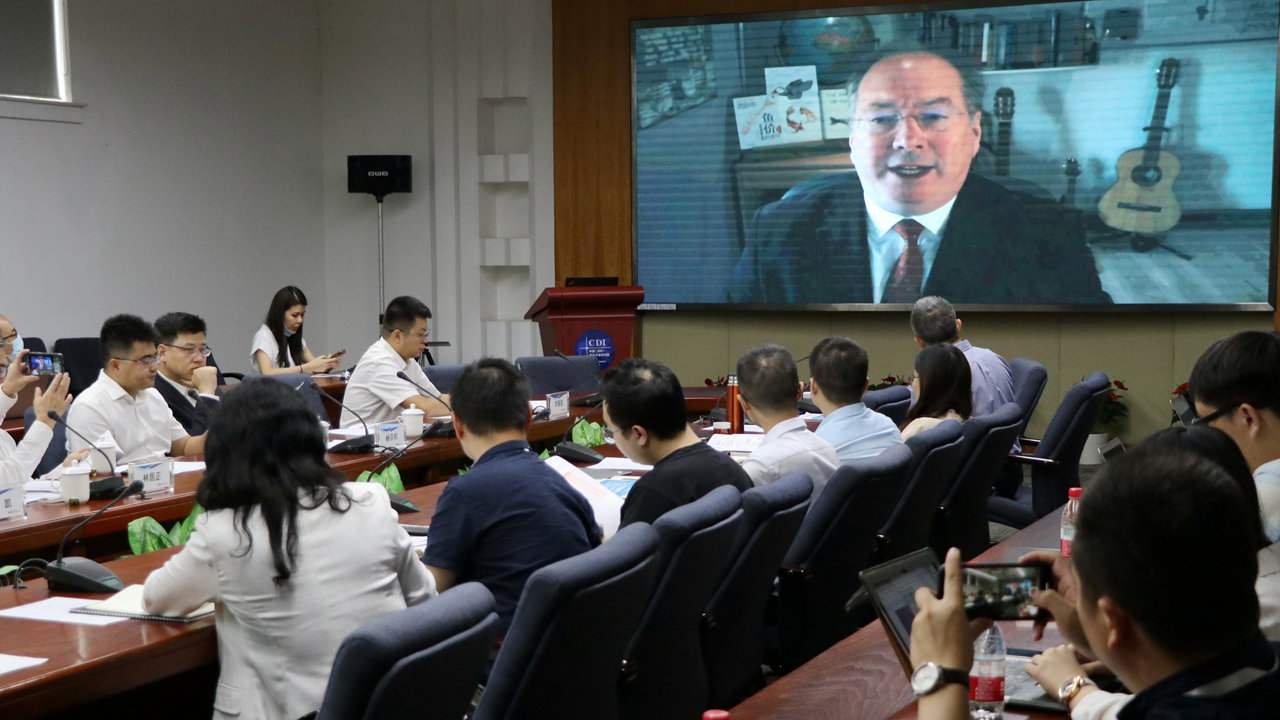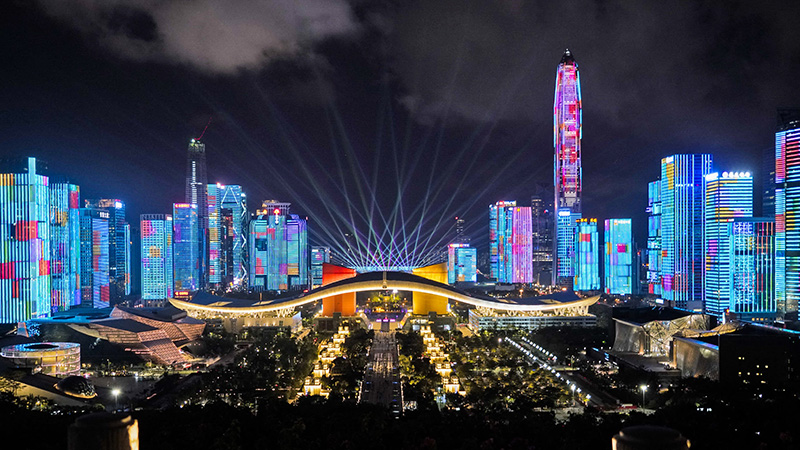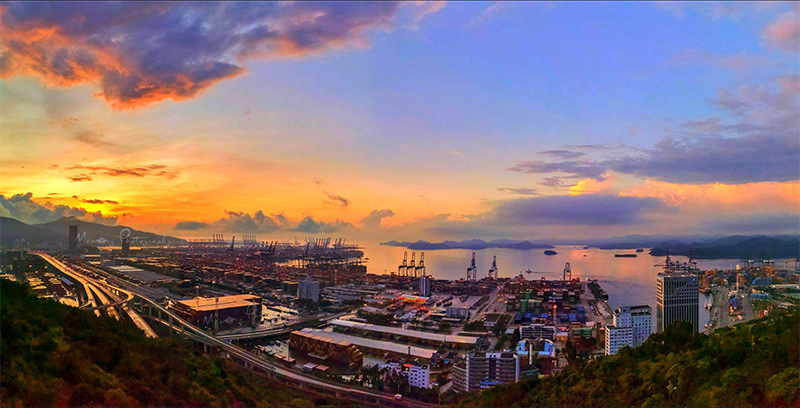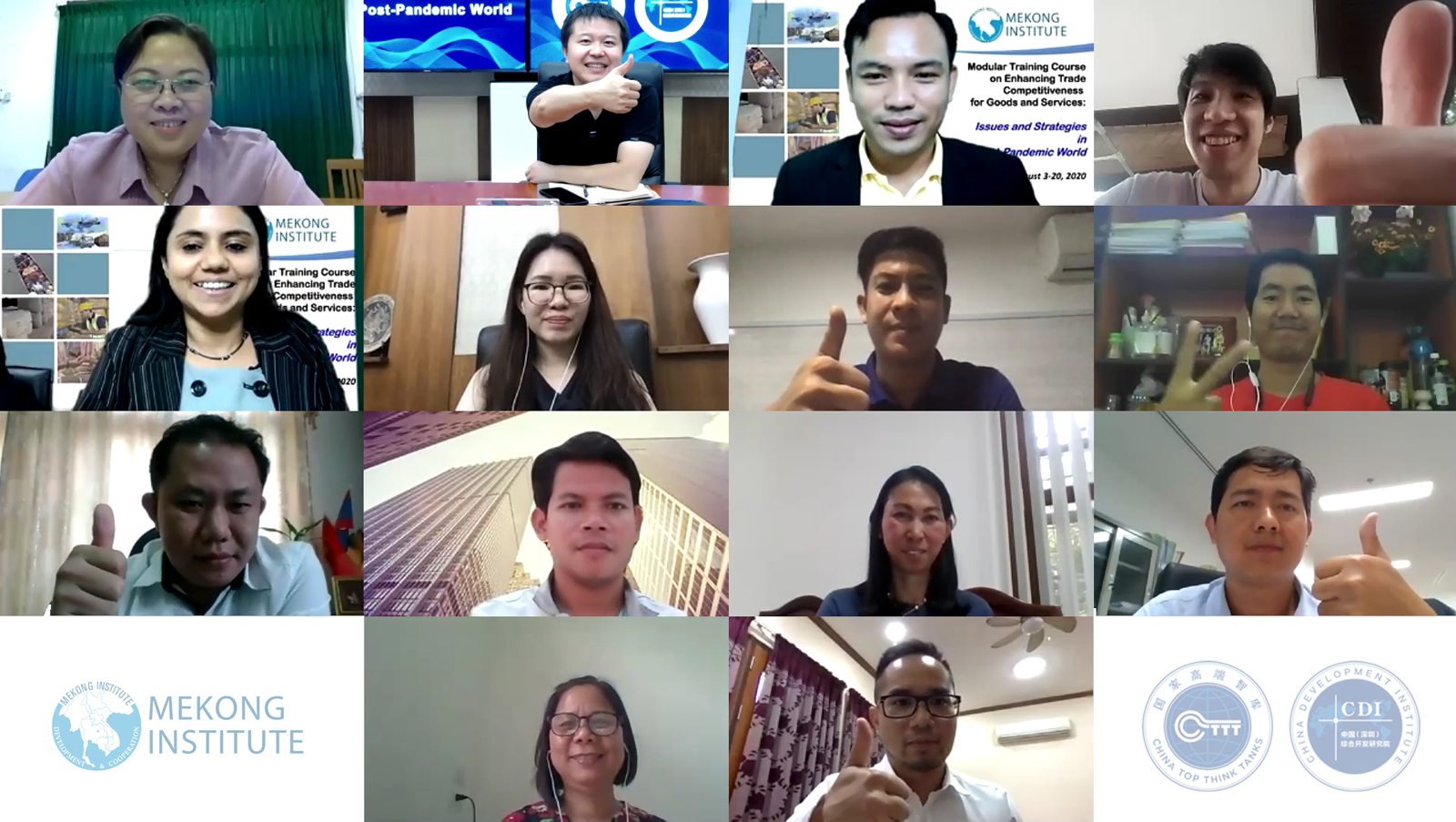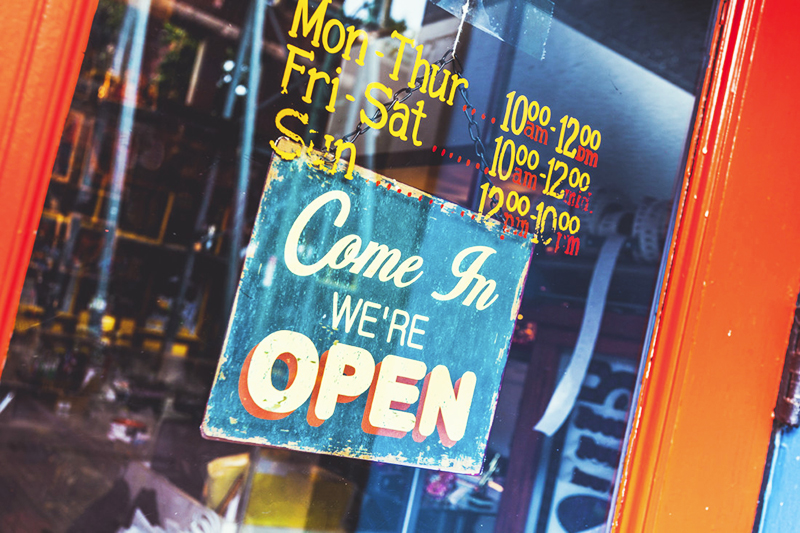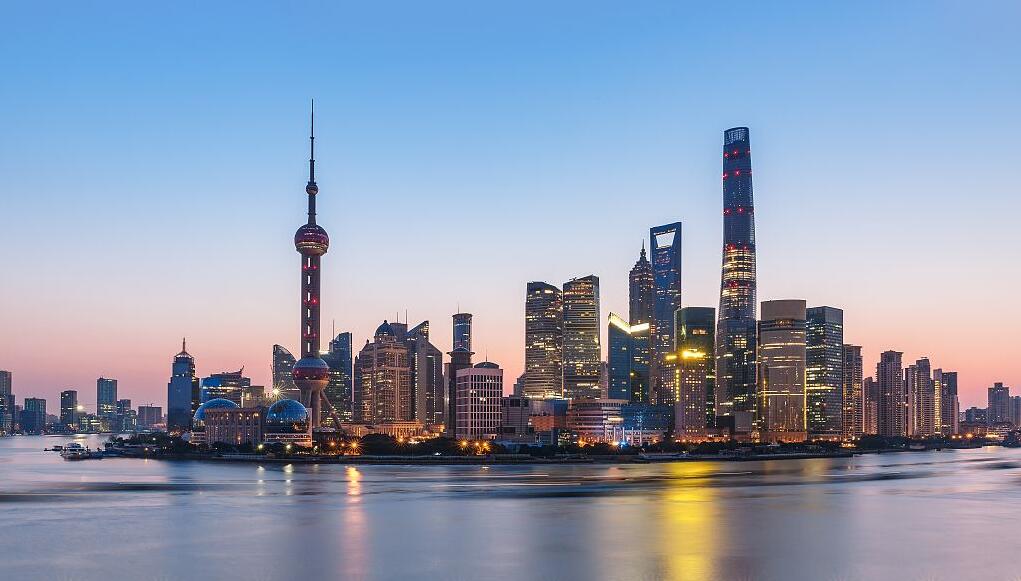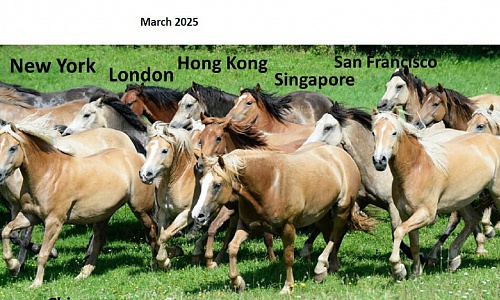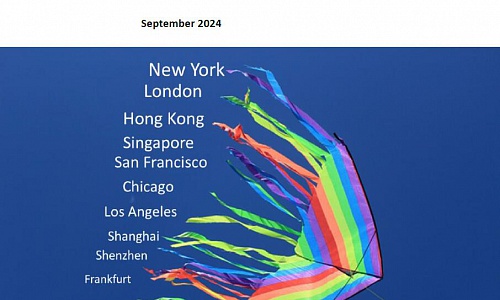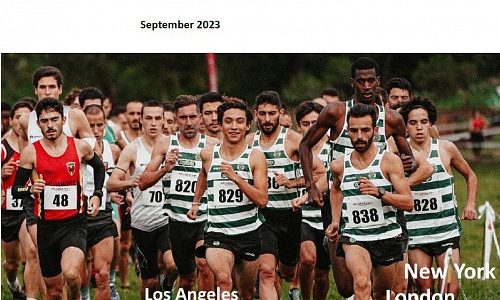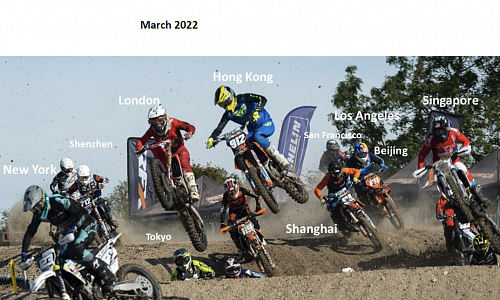Consul General of Israel visits CDI
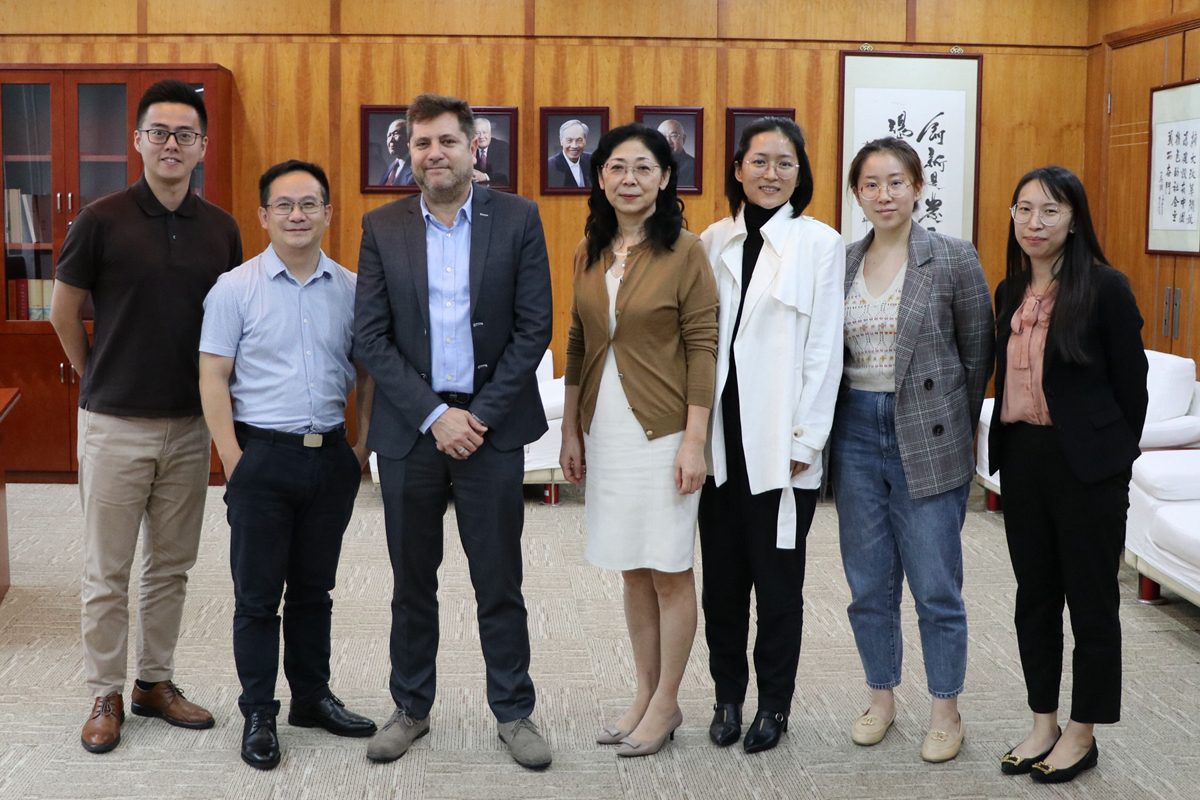
On November 24, Mr.Peleg Lewi, Consul General of Israel to South China, visited CDI and exchanged ideas on the economic development of Guangdong-Hong Kong-Macau Greater Bay Area, as well as Sino-Israeli economic and academic cooperation with CDI researchers. Dr. Guo Wanda, executive vice president of CDI, shared insights on GBA’s overall framework, economic structure and its unique competitive strengths, which is the steadily growing inflow of young talents and the integration of a rich and long industry chain.
Global Financial Centres Index 28 Launch
Information
The Global Financial Centres Index(GFCI) was first developed in 2005 and has been published every six months since 2007.Starting in 2016, Z/Yen and China Development Institute joined parentship and have been working closely in the production of GFCI.
On September 25, 2020, GFCI 28 was simultaneously launched in Seoul, South Korea and Shenzhen, China, with the latter being held at China Development Institute.In this edition, 111 financial centres were rated, with the top ten centres as followed, New York, London, Shanghai, Tokyo, Hong Kong, Singapore, Beijing, San Francisco, Shenzhen, Zurich. While financial centres across the globe have inevitably been impacted by the Covid-19 pandemic, the top ten centres appear to perform better than their peers.During the launch, panelists also commented on the challenges and opportunities faced by Guangdong-Hong Kong-Macao Greater Bay Area financial centres, considering the mixed performance across the leading financial centres, as well as Asia/Pacific centres.
Date: September25, 2020
Host: CDI
Theme: Global Financial Centres Index 28 Launch and Guangdong-Hong Kong-Macao Greater Bay Area financial centres outlook
GDP growth hits 4.9% in Q3,with surging exports
GDP was up 4.9% y/y in Q3, a rise of 1.7 pps from Q2, but still 1.1 pps lower than in Q3 2019. Industrial output was up 5.8% y/y in Q3, up 1.4 pps from Q2, and up 0.8 pps from Q3 2019.
Investment was up 8.8% y/y, up 5 pps from Q2, and up 4.1 pps from Q3 2019, with investment in manufacturing rising fastest, by 9% y/y, up 10 pps from Q2. Retail sales of social consumption goods were up 0.9% y/y, and up 4.8 pps from Q2 -- and their real growth rate was -0.4% y/y.
CPI was up 2.3% y/y in Q3, down 0.4 pps from Q2. In particular, CPI rose only 1.7% y/y in September, an accelerated decrease. Producer prices fell less. The ex-factor price index of industrial goods fell -2.2% y/y, up 0.9 pps from Q2. PPI rose 1.2% m/m. It fell -2.7% y/y, up 1.7 pps from Q2.
The societal financing scale increased 46% y/y, driven by booming government bond issuance. The main financial indicators have stable or slightly increasing growth rates. At the end of Q3, M2 was up 10.9% y/y, down 0.3 pps from June. Household savings rose 13.9% y/y, down 0.4 pps from June. M1 was up 8.1% y/y, up 1.7 pps from June.
Despite the global pandemic, and the still ongoing U.S.-China trade war, exports are surging, and rose 10.2% y/y, up 5.7 pps from Q2, and up 6.3 pps from Q3 2019. The Chinese share of world exports also climbed, to 20%, from 13.1% in 2019, and 12.8% in 2018. Specifically, exports to the United States rose 19.2% y/y. Imports increased 4.3% y/y, up 10.1 pps from Q2.
The RMB has been appreciating against the dollar since June. On October 26th, the RMB had appreciated 6.7% compared to its value at the end of May. However, the magnitude is still too small to have sizable impacts on trade.
The export surge can be attributed to China’s good pandemic control, and its economy’s high resilience. Based on these two factors, we expect exports will remain in good shape in the near future.
Recovery reaches pre-pandemic level
Industrial output was up 5.6% y/y, up 0.8 pps from July, reaching the average growth rate of 2019. We expect growth might slightly exceed the pre-pandemic level for the rest of the year. Investment fell -0.3% y/y January-August, up 1.3 pps from previous months. The driving force is switching from state to private investment, reconfirming the return to pre-pandemic economic recovery.
Consumption was up 0.5% y/y, the first turn to positive growth this year, and up 1.6 pps from July. Exports were up 11.6% y/y, above 10% y/y for two consecutive months. Despite the U.S.-China conflict, exports to the United States grew faster than 20% y/y. Imports fell -0.5% y/y.
CPI growth turned downward in August, and was up 2.4% y/y, falling to the pre-pandemic level. For the next three months, based on the high base numbers of 2019, CPI is expected to fall further. Producer prices continued to rebound. The ex-factory price index of industrial goods fell -2% y/y, and PPI fell -2.5% y/y, up 0.4 and 0.8 pps from July, respectively. But both are still -1.6% and -2.2% y/y lower than in 2019.
The main financial indicators displayed differing patterns in August. M2 was up 10.4% y/y, falling for two consecutive months, and down 0.7 pps from June. M1 rose 8% y/y, up 1.1 pps from July, maintaining its upward trend. The societal financing scale rose 63.1% y/y, mainly driven by large government bond issuance.
The Chinese RMB has strengthened by 2.5% against the dollar in the last four weeks. Cross-border RMB receipts and payments totaled 12.67 trillion yuan, up 36.33% y/y. We expect the RMB will further strengthen in the rest of the year, given the Chinese economy’s much better comeback compared to the United States, the large interest rate differential between the United States and China, and the U.S. dollar flooding into the market. Even though the RMB cannot overtake the dollar in the international market in the near future, the outlook for the RMB is promising.
Forty years and on: Shenzhen Special Economic Zone aiming for a higher goal
Information
On August 26, 2020, Shenzhen marks 40 years since being designated as a “Special Economic Zone”. As the first of its kind on many levels, what will be next for Shenzhen? How can Shenzhen continue to be the showcase of the reform and opening up of China? On August 18, 2020, representatives of the public sector, private sector, and academia shared their thoughts on this matter during a seminar held by China Development Institute.
Date: August 18, 2020
Host: CDI
Theme: Forty years and on: Shenzhen Special Economic Zone aiming for a higher goal
Recovery slows, but continues
Industrial output rose 4.8% y/y in July, the same rate as in June, down 1.1 pps from Q4 2019. Investment grew 8.3% y/y, up 2.7 pps from June, and up 2.9 pps from Q4, and is still mainly driven by state investment, with a growth rate of 12.7% y/y. The best performer among fixed asset investments is real estate, with a growth rate of 11.6% y/y in July, up 3.7 pps from Q2.
Consumption is still weak, and was down -1.1% y/y, and up 0.7 pps from June, showing customers’ caution over COVID-19. In July, exports grew 10.4% y/y, up 6.1 pps from June, and up 6.4 pps from H2 2019, possibly due to the halt of overseas production. Imports are fluctuating significantly, and aren’t showing any trend. They rose 1.6% y/y, down 4.6 pps from June.
Producer price growth is trending up. The ex-factory price index of industrial goods rose 0.4% m/m and fell -2.4% y/y. PPI rose 0.9% m/m, and fell -3.3% y/y. Growth of the two indices is down 0.6 and 1.1 pps from June. But we expect future producer prices to at most rebound to their pre-pandemic growth rate levels. CPI rose 2.7% y/y, up 0.2 pps from June. We expect its rise to be temporary.
Major financial indicators have been falling, or flat. M2 rose 10.7% y/y, down 0.4 pps from June. Loans rose 13% y/y, down 0.2 pps from the end of June. M1 grew 6.9% y/y, up just slightly, by 0.4 pps.
On August 14th, a pioneering digital currency initiative initiated by the People’s Bank of China stated that that it would expand the trail program to a number of large cities, with the involvement of the big four state banks. China’s Alibaba has already entered into a “strategic partnership” with the Central Bank over the sovereign digital currency plan. We view digital currency reform as part of the Chinese government’s grand Fintech plan. It will make financial transactions easier, by reducing the intermediary role of commercial banks, directly benefiting small and medium-sized firms.
CDI researcher speaks on coronavirus control and economic recovery in online lecture
On August 11, Dr. Guoping Zhang shared views on China's experience and practice on coronavirus prevention and control, and elaborated on the economic recovery action plan and challenges brought by the pandemic. This lecture was part of the online training program "Enhancing Trade Competitiveness for Goods and Services: Issues and Strategies in Post-Pandemic World" organized by Mekong Institute. Participants of the program include mid-level officials from government ministries and departments, think tanks, academic and research institutions, as well as those from the private sector representing business associations, export companies, and SMEs representing Lancang-Mekong countries.
China’s US$68 billion Greater Bay Area rail plan for faster, easier city links
China will invest CNY 474.1 billion (US$67.9 billion) to improve rail connection in the Greater Bay Area, building 775 km (480 miles) of intercity railway and five transport hubs, according to a plan approved by the National Development and Reform Commission (NDRC).
The Greater Bay Area is an ambitious scheme announced by the Chinese government in 2017 to link Hong Kong, Macao and nine cities in Guangdong province to form an integrated mega economic and technology hub capable of rivalling San Francisco’s Silicon Valley, writes South China Morning Post.
In recent years the scheme has been gradually rolled out with the construction of the Hong Kong-Zhuhai-Macao Bridge and the Hong Kong-Guangzhou high-speed train, as well as inter-region cooperation on other infrastructure projects, education and scientific research.
The connectivity programme, which was approved on 30 July by the NDRC, China’s top economic planning agency, is intended to cover all cities in the area above county level with 5,700 km of railway by 2035. By then, passengers would be able to commute between major cities in the Greater Bay Area within an hour, major cities to smaller cities within two hours, and major cities to capitals in surrounding provinces within three hours, according to the plan.
Under the scheme, transport hubs will be built within cities, connecting airports, train stations and linking intercity rail systems with inner city transport. Hong Kong and Macao would also be better integrated into the regional grid, the plan said.
Currently, connectivity was limited in the region, said Guo Wanda, executive vice-president of the China Development Institute, a Shenzhen-based think tank.
“There are still too few [railway] lines between cities, it’s inconvenient to switch from railways to subways and other services [in different cities] – including ticketing and road signs – are not integrated,” he said.
Under the new plan, small and medium-sized cities would be better connected, instead of being overshadowed by major cities, said HuoWeidong, who has a doctorate from the Institute of Guangdong, Hong Kong and Macao Development Studies at the Sun Yat-sen University in Guangzhou.
In addition, Huo described the new plan as a “breakthrough in design” because it would consider intercity connection as a “hub-to-hub” concept compared with the old “city-to-city” model, easing the movement of people, business and goods.
“The hub-to-hub design will also strengthen the connection of major airports and small and medium-sized cities, and I am confident that this will present opportunities attractive to overseas investors,” he said.
Immediate effects of the plan included boosting the economy within the Greater Bay Area, said Peng Peng, executive director of the Guangdong System Reform Research Society.
“Guangdong, the largest province in terms of foreign trade [in China], has been hit hard by the coronavirus pandemic and [the souring of] US-China relations. We can’t depend on foreign trade for the recovery,” he said. “In the short term, the room for boosting domestic demand will be limited. So infrastructure construction will be the main avenue for growth.”
However there were difficulties in carrying out the plan, such as financing, Peng said.
“Guangzhou’s financial situation is [less robust than] Shenzhen’s. A critical factor [for this project] is whether local governments can arrange the financing smoothly,” he said.
Strong rebound, even without a major stimulus
GDP rose 3.2% y/y in Q2 -- a remarkable performance amid global pandemic. In June, industrial output was up 4.8% y/y, and up 0.4 pps from May, though has still not reached the pre-pandemic level, and was down 1.1 pps from Q4 2019. Investment, mostly driven by state investment, was up 5.6% y/y, up 1.7 pps from June and down 0.2 pps from Q4 2019.
Retail sales of consumption goods fell -1.8% y/y in June, up 1 pps from May. Exports rose 4.1% y/y in June, achieving positive growth for three consecutive months, averaging 4.5% y/y, higher than the growth rate of H2 2019. Imports were up 6.2% y/y, turning positive for the first time.
The ex-factory price index of industrial products fell -3% y/y in June, and PPI fell -4.4% y/y, up 0.7 and 0.6 pps from May, respectively. CPI slightly rebounded, rising 2.5% y/y, up 0.1 pps from May, and increased 0.4% y/y, after removing the seasonal factor.
The main financial indicators were still strong in June. M2 rose 11.1% y/y, the same rate as in May. The still-increasing adjusted M1 rose 7.3% y/y. Savings deposits from non-financial institutions were up 13.2% y/y.
The market has seen a steady increase in money market rates since early May, and the highest 10-year sovereign bond yield in five months. And although People’s Bank of China Governor Yi Gang signaled a fresh liquidity injection two weeks ago, it is taking an unusually long time to be delivered. We expect the strong growth rebound has made monetary loosening exit early. This is partly in order to avoid asset bubbles, in line with the recent housing price surge in major cities like Shenzhen, where housing prices have risen 20% over the past two months, and as seen in the stock market rally.
Financial centre futures conclave - bringing together representatives of financial centres to build on our common interests
At a time when the global economy is facing a major shock from the Covid-19 pandemic, financial centres will play an enormous role in assisting recovery, as well as being candidates for recovery themselves.
On July 15, representatives of financial centres across the world were brought together during the online conclave co-organized by Z/Yen Group and China Development Institute in discussion of areas of common interest on restarting economies, adjusting strategies, and renovating financial centres for the next decade. Speakers include: The Right Honourable The Lord Mayor of The City of London, Alderman William Russell, as well as Alderman and Sheriff Professor Michael Mainelli.


